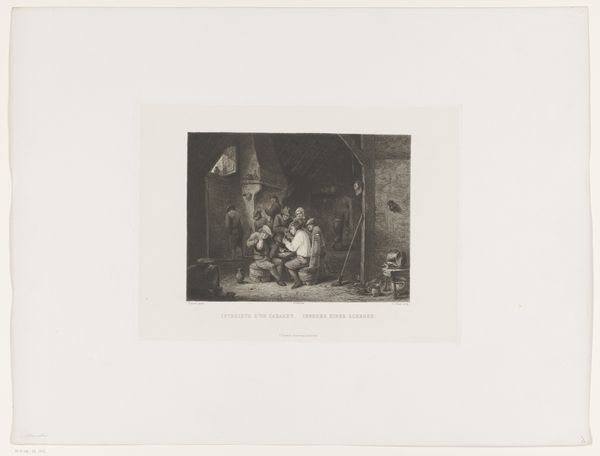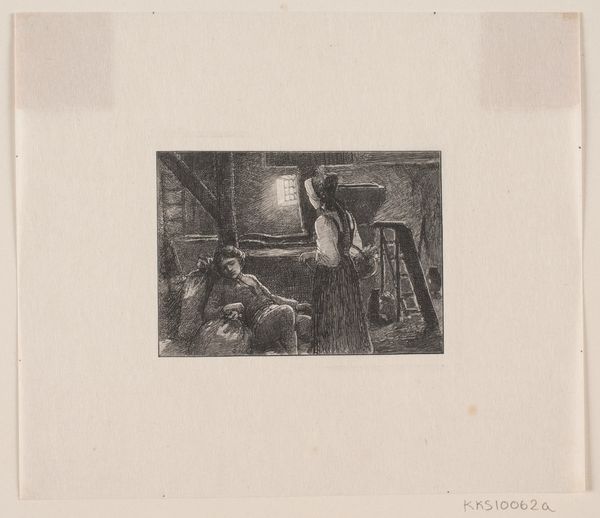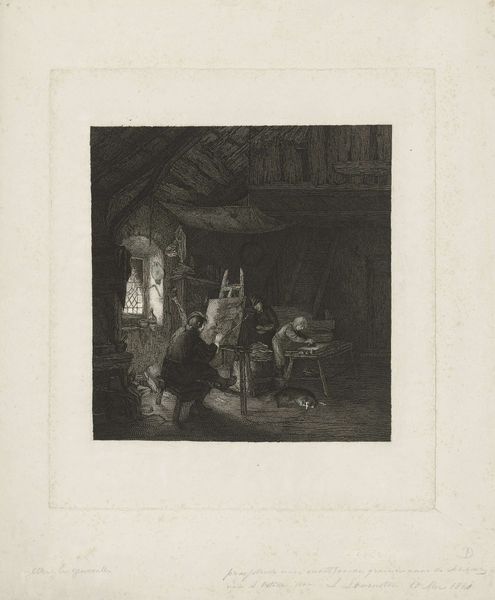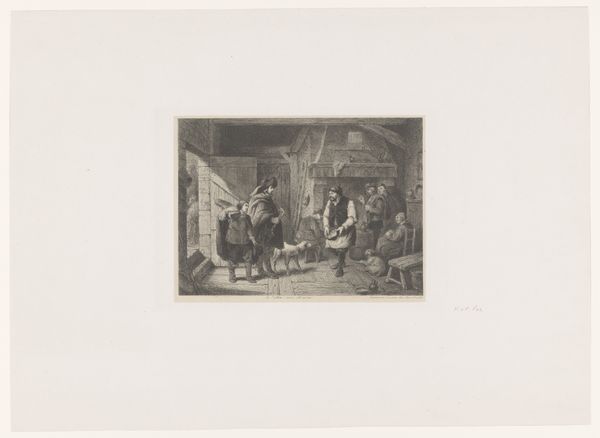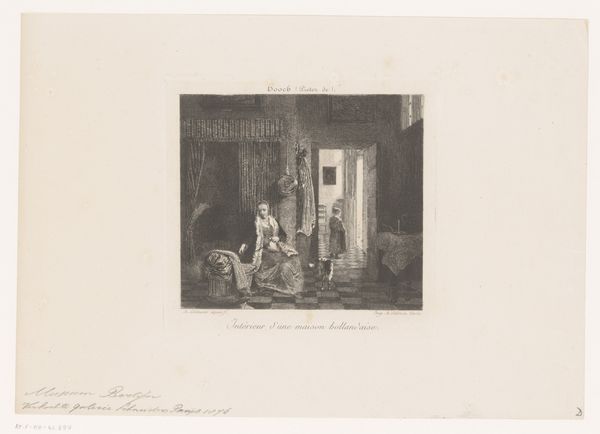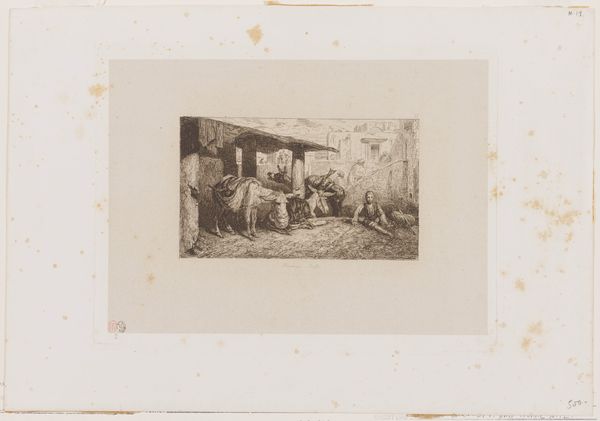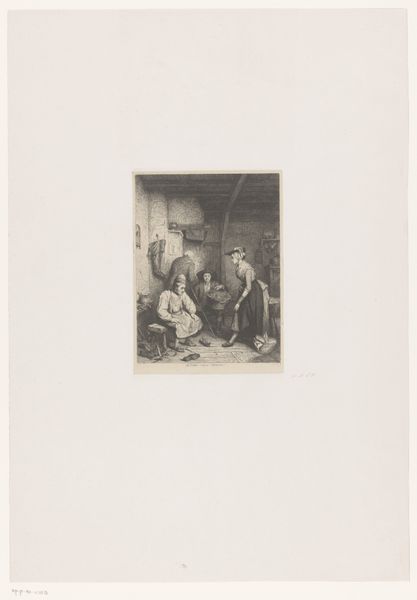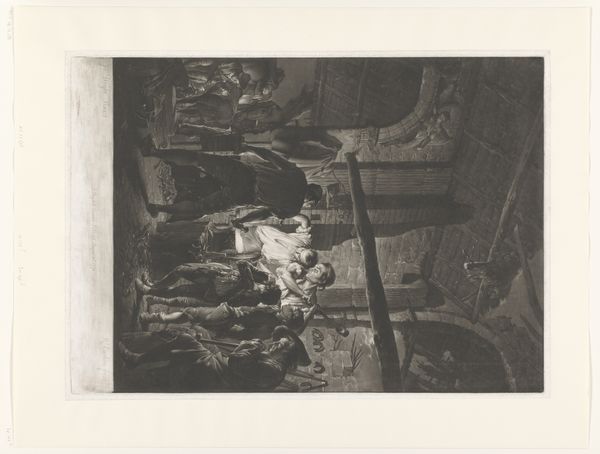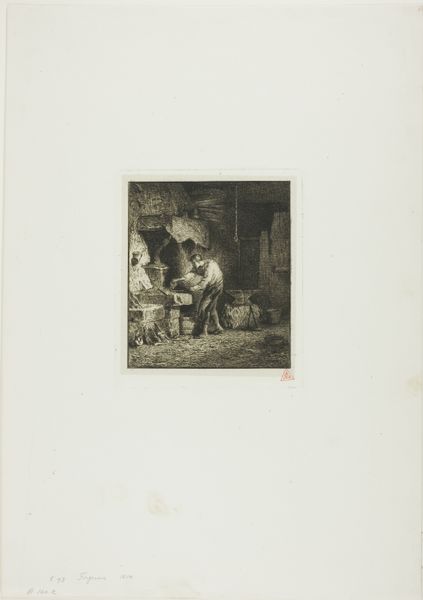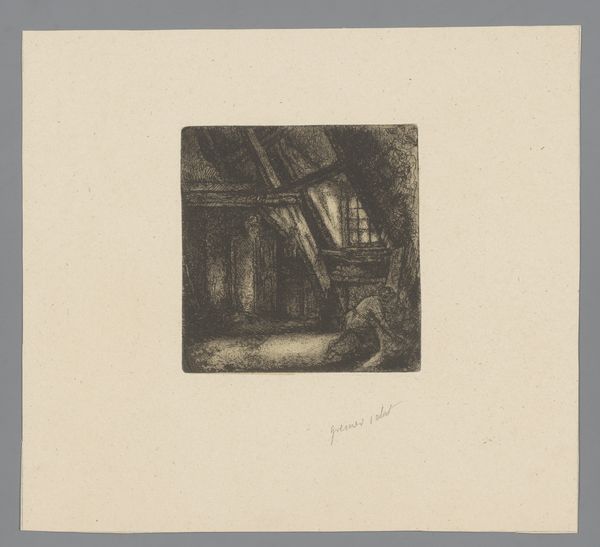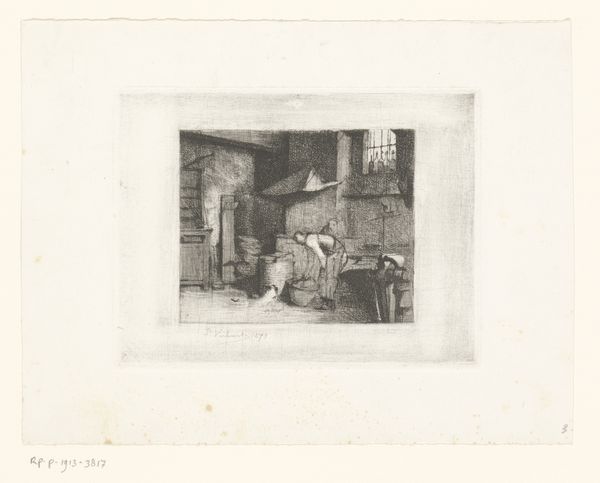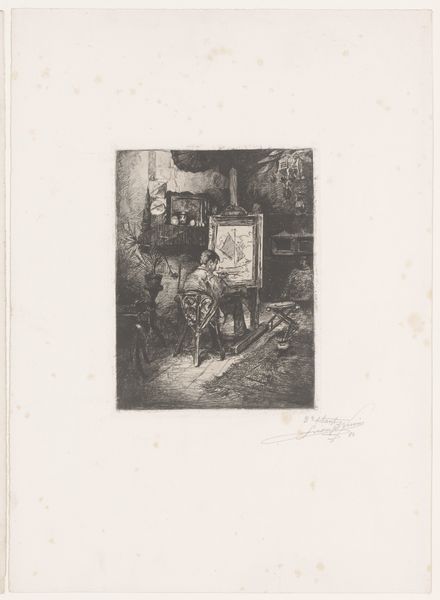
drawing, print, etching, paper
#
drawing
# print
#
etching
#
landscape
#
paper
#
genre-painting
#
realism
Dimensions: 128 × 194 mm (image); 178 × 247 mm (plate); 321 × 453 mm (sheet)
Copyright: Public Domain
Curator: Charles Jacque's etching, "The Farrier's Shop," created in 1865, captures a scene of everyday rural life with remarkable detail. He used printmaking to illustrate scenes of labour and this one, held at The Art Institute of Chicago, depicts craftsmen tending to a horse within their workshop. Editor: It has a gritty yet tender atmosphere, wouldn’t you say? The light falls delicately on the horse’s flank while the floor is obscured into dirt. It is so human. There's a primordial quality, the horse almost feels like a symbol for human domestication, doesn't it? Curator: It’s quite in line with Jacque's interest in depicting the realities of agrarian society. Printmaking allowed these images to circulate widely, bringing the rhythms of rural life to urban audiences and fostering a connection, even a romanticized one, with the land. Editor: Right. You have a collaboration happening between species. Note the chickens in the foreground – it lends a domestic feeling. Horses often symbolize strength and virility, but within this particular context, its strength is put into the service of labour. The farrier ensures that that labor is efficient and effective. Curator: The forge itself, prominent in the background, symbolizes that transformation and labour you describe. Notice how the tools hanging near the window speak to the skill required for this craft. It's also significant that farriers held an important social position; their skills were essential for agriculture and transportation. They shaped trade and even war. Editor: That makes the placement of light and shadow that much more powerful! The dim interior suggests enclosure and safety, yes, but think of the farrier as an intermediary with that dark force! A figure navigating shadow for progress. Even the ladder is reaching toward some sense of enlightenment. Curator: Yes, Jacque masterfully uses light to create depth. In this context it illuminates a scene but, at the time it serves also to amplify a kind of socio-political dynamic. I do see how this otherwise straightforward depiction speaks to broader cultural concerns during a time of rapid industrialization, where there's a kind of anxiety for progress, especially within rural society. Editor: Seeing that craftsmanship, it reflects our past in shaping civilization itself! We’ve journeyed through art, labor, animal life, and society.
Comments
No comments
Be the first to comment and join the conversation on the ultimate creative platform.
